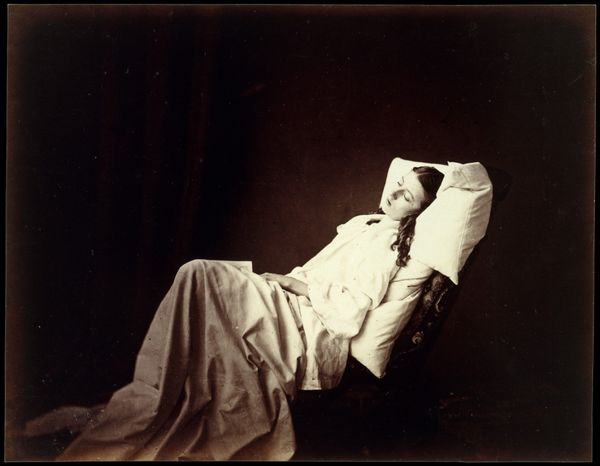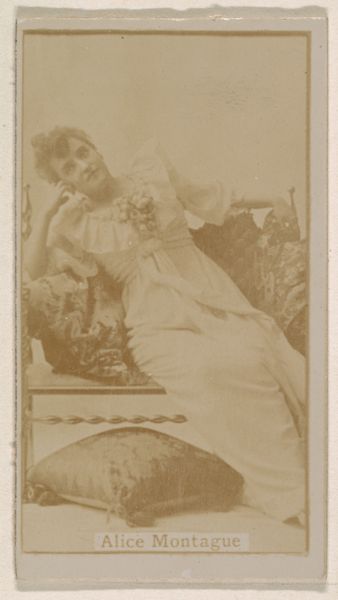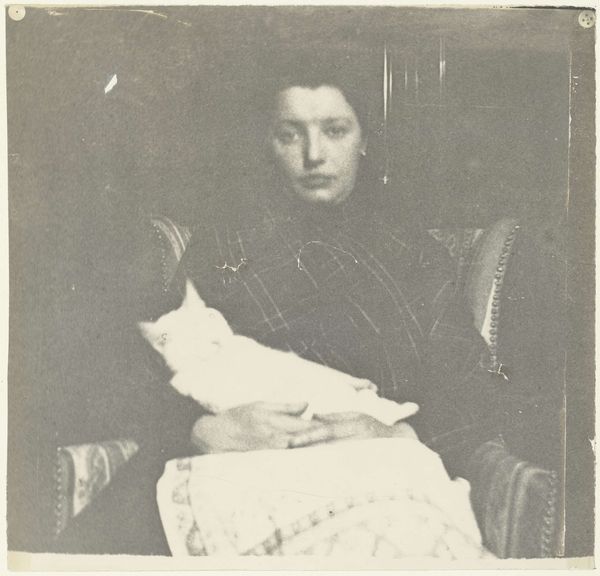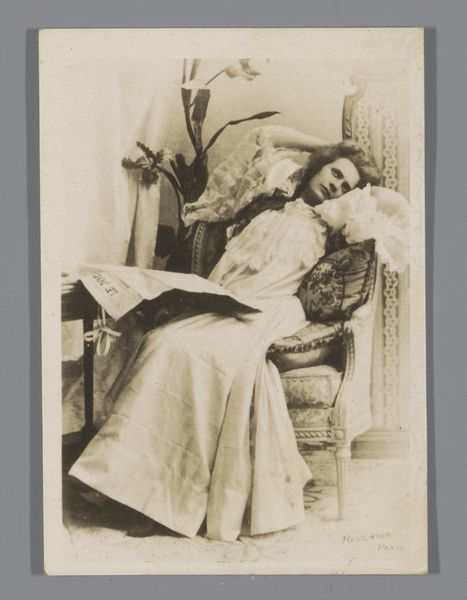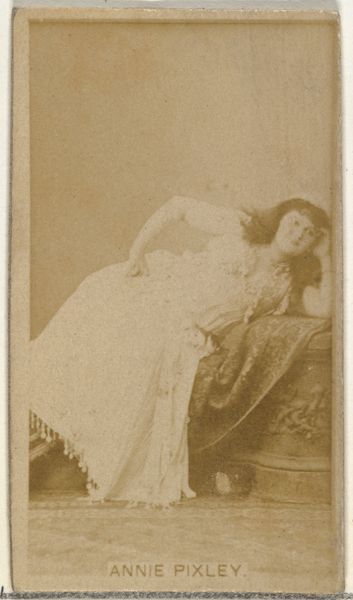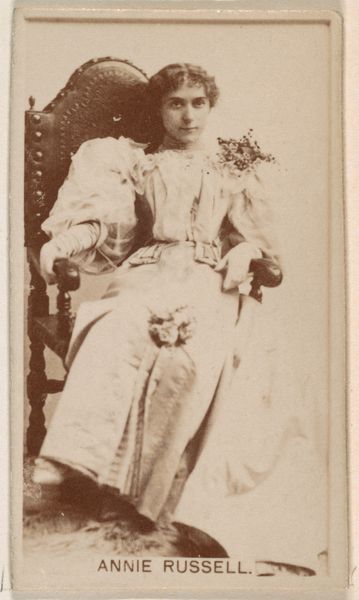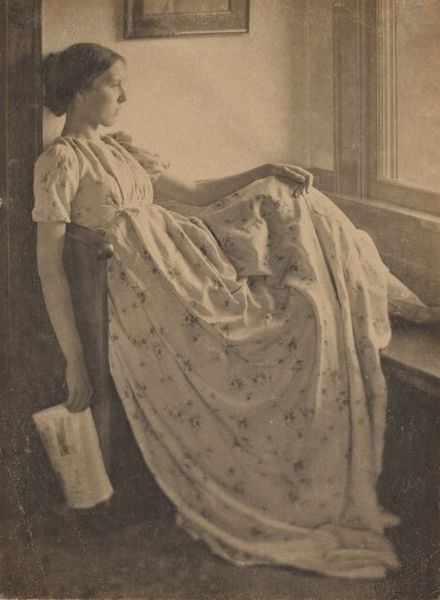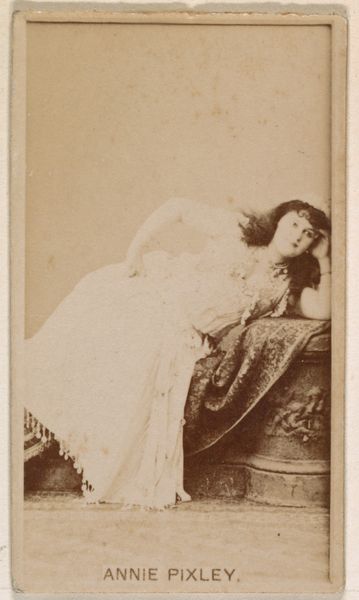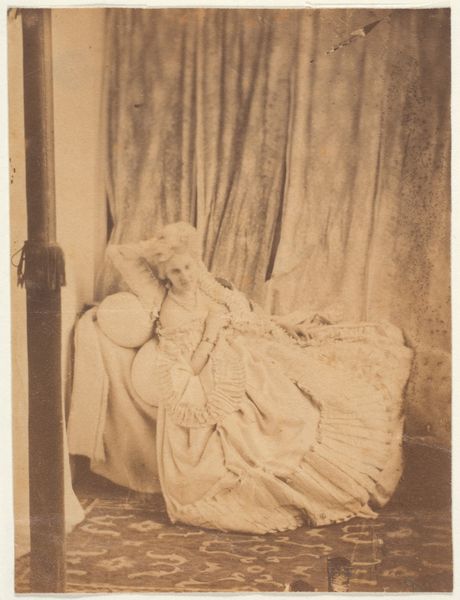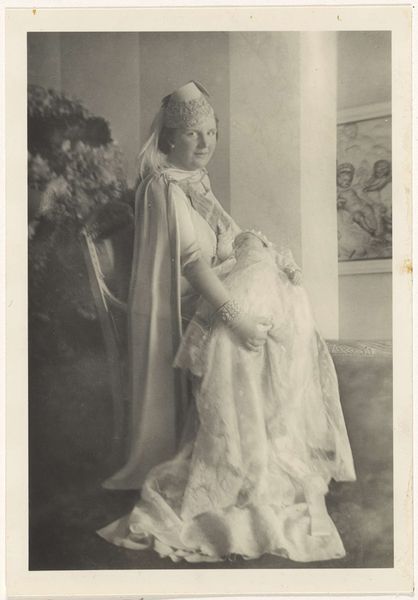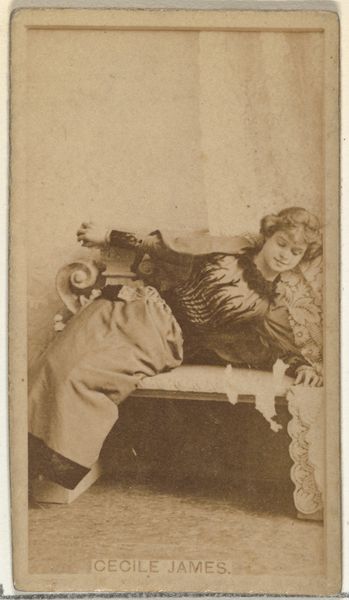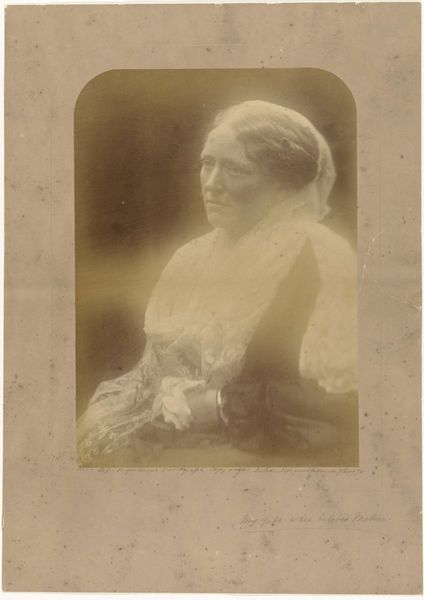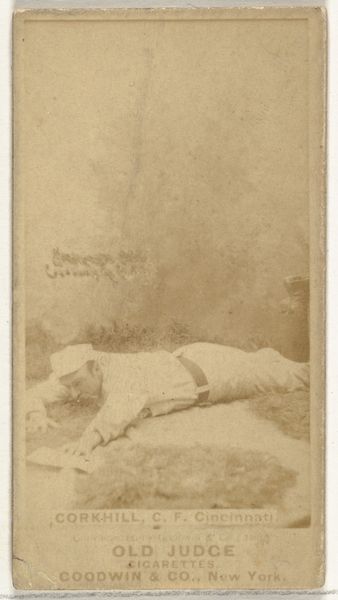
photography
#
portrait
#
still-life-photography
#
wedding photograph
#
strong focal point
#
photography
#
framed image
Dimensions: height 180 mm, width 130 mm, height 216 mm, width 135 mm
Copyright: Rijks Museum: Open Domain
Editor: This photograph, "Portret van een oude vrouw liggend in bed," taken in 1903 by Henry Pauw van Wieldrecht, is quite striking. It's a deeply personal portrait, but also somewhat unsettling with the figure’s rigid pose. What do you see when you look at this piece? Curator: Initially, the formal structure establishes the photograph's thematic premise: horizontality dominating verticality to evoke the woman in a flat bed. The figure becomes a part of the photograph's planar arrangement, yet her face offers an opening for spatial penetration. Observe the deliberate layering of textures, from the patterned bedding to the smooth drape, each contributing to the work’s compositional depth, enhanced by light and shadow to denote the woman's decline. Note the placement of the table on the right: does it offset the imbalance created by the head and torso that lean left, providing spatial reconciliation within the visual field? Editor: That's fascinating, the way the composition reflects the themes of illness and age. Do you think the framing and pose affect our interpretation? Curator: The rigid composition contributes to the creation of a tense atmosphere. But if the photograph had, in contrast, possessed an aesthetic appeal would it be less tragic? How is visual meaning enhanced? Editor: It's amazing how focusing on structure and materiality can completely change my understanding of the emotional impact. Curator: Indeed, by acknowledging that we do not merely bring a neutral perspective but are also enmeshed with art through prior views on aesthetics and emotions that become deeply associated within its significance, that is how the piece reveals new intellectual possibilities.
Comments
No comments
Be the first to comment and join the conversation on the ultimate creative platform.

